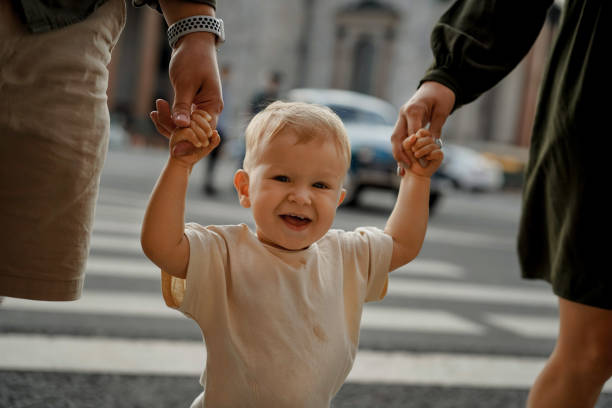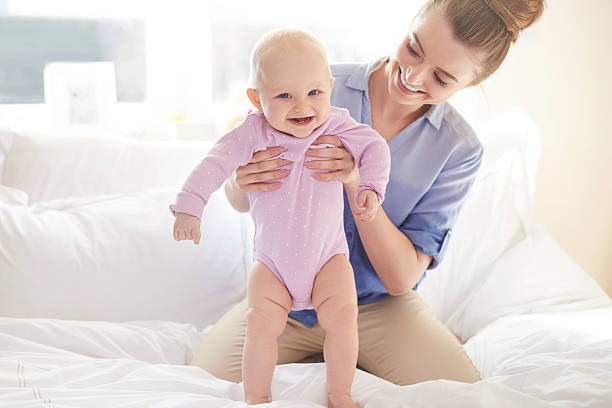Watching babies and toddlers grow up seems like a small miracle to many parents. The development steps right at the beginning are very amazing. After all, life begins as a rather helpless newborn child, until more and more skills are added in a relatively short time.
The first free steps are often eagerly awaited and cheered by everyone. The little ones can be tireless when it comes to their own mobility. Especially when it comes to being able to move around on your own two feet. It is therefore a motor milestone that changes everything in the life of the child and the entire family.

Once you can walk on two feet, you get completely different ways of discovering the world. Small children can get from one place to another naturally much faster and still have both hands free. This gives the little ones totally new ways of living and playing. However, it can take a few months for small children to learn to walk, and then the point in time is still very individual. Some start as early as nine months, and for others, it can actually take twice as long. It’s the same as with any other development. Therefore, as a parent, you should not let yourself be unsettled.
How to help children learn to walk
Learning to walk takes a lot of practice. Just “force” is of no use to the little ones. Small children need an environment in which they can move freely and safely and, above all, try themselves out. As parents, you should anticipate the mobility attempts, not fearfully, but trustingly accompany them. This is the best way for children to learn how to deal with possible dangers and assess risks.
Once the first steps have been taken, the little ones will continue to practice the newly learned skills all by themselves and with perseverance. And then a child-safe home becomes important. A practiced sense of balance is very important for free running, as well as for all other types of locomotion. Because soon after the first attempts at running, they move on with other aids, such as a scooter for children or a balance bike.
Motivate and give self-confidence
The best way to motivate young children is to approach it in a playful way. For example, the parents could sit on the floor, open their arms and invite the child to run to them. For example, children who are more advanced often have fun when they can draw on tracks with chalk or walk along tracks laid out with strings. For them, learning to walk is like a nice game and that’s the easiest way to learn it.

The motivation can be the cheering of the parents and their laughter and joy. In this way, the child knows – and is proud of it – that she has done everything right. Parents’ praise is the best motivation for children. But this also means that the things can be done all by oneself (i.e. without any noticeable help from parents or other people) and they can then be proudly presented. Also, note clever tips for working from home with children and how to wash children’s hair without stress.
